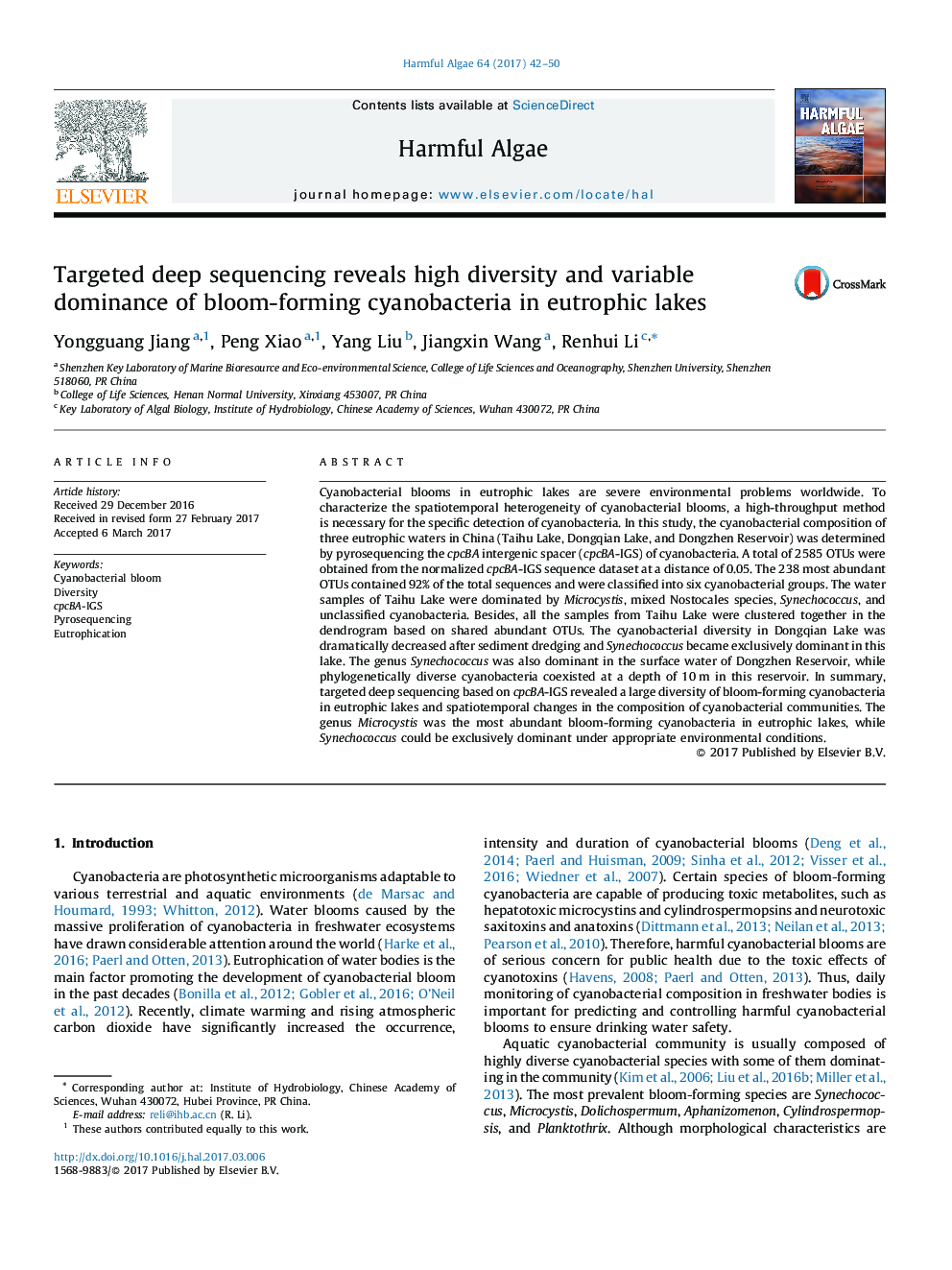| Article ID | Journal | Published Year | Pages | File Type |
|---|---|---|---|---|
| 5765743 | Harmful Algae | 2017 | 9 Pages |
Abstract
Cyanobacterial blooms in eutrophic lakes are severe environmental problems worldwide. To characterize the spatiotemporal heterogeneity of cyanobacterial blooms, a high-throughput method is necessary for the specific detection of cyanobacteria. In this study, the cyanobacterial composition of three eutrophic waters in China (Taihu Lake, Dongqian Lake, and Dongzhen Reservoir) was determined by pyrosequencing the cpcBA intergenic spacer (cpcBA-IGS) of cyanobacteria. A total of 2585 OTUs were obtained from the normalized cpcBA-IGS sequence dataset at a distance of 0.05. The 238 most abundant OTUs contained 92% of the total sequences and were classified into six cyanobacterial groups. The water samples of Taihu Lake were dominated by Microcystis, mixed Nostocales species, Synechococcus, and unclassified cyanobacteria. Besides, all the samples from Taihu Lake were clustered together in the dendrogram based on shared abundant OTUs. The cyanobacterial diversity in Dongqian Lake was dramatically decreased after sediment dredging and Synechococcus became exclusively dominant in this lake. The genus Synechococcus was also dominant in the surface water of Dongzhen Reservoir, while phylogenetically diverse cyanobacteria coexisted at a depth of 10Â m in this reservoir. In summary, targeted deep sequencing based on cpcBA-IGS revealed a large diversity of bloom-forming cyanobacteria in eutrophic lakes and spatiotemporal changes in the composition of cyanobacterial communities. The genus Microcystis was the most abundant bloom-forming cyanobacteria in eutrophic lakes, while Synechococcus could be exclusively dominant under appropriate environmental conditions.
Related Topics
Life Sciences
Agricultural and Biological Sciences
Aquatic Science
Authors
Yongguang Jiang, Peng Xiao, Yang Liu, Jiangxin Wang, Renhui Li,
